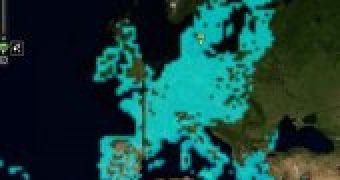The Eye on Earth project developed by Microsoft in collaboration with the European Environment Agency (EEA) will continue to evolve, and might bring biodiversity or noise-pollution information to its users, according to Ludo De Bock, Microsoft’s senior director for the European Union and NATO countries. Nothing is set in stone at this point in time, but the website that was getting over 100,000 visitors per month last summer has certainly already grown consistently.
When it was initially introduced in 2008, Eye on Earth was designed as an online destination centralizing data on water quality from monitoring points across Europe’s beaches. Users are able to access localized water-quality statistics for 32 European countries from no less than 22,000 monitoring points belonging to WateWatch. However, as of November 2009, users have also been able to access data on air quality from 1,000 monitoring stations across the continent keeping tabs on the levels of ozone, nitrogen dioxide and particulate matter.
However, even the addition of biodiversity or noise-pollution information will be just another stage in the evolution of Eye on Earth. Ultimately, De Bock envisions the resource as being able to produce complete footprints of the local biospheres. “Perhaps someday people might even use these interactive report cards to decide where they want to live,” he noted.
A key aspect of the Eye on Earth’s evolution was migrating the project to Microsoft’s Cloud platform. Eye on Earth functions as a Cloud-based service leveraging Microsoft’s Windows Azure and SQL Azure. Because it was hosted, rather than on-premise, Eye on Earth was also greener, and more cost effective, Microsoft underlined.
“At the very least, it creates a greater awareness of how precarious the environment is in certain parts of Europe,” De Bock added. “At best, it may help identify problem areas faster and fuel a demand for policy changes that will reduce pollution.”
“With Eye on Earth, the EEA and Microsoft bring complex strands of information together into a single, simple-to-use and easy-to-understand application,” Jacqueline McGlade, executive director of the EEA, commented. “Reliable and accessible environmental information is key to sound decisions, both for policymakers in formulating European policies and for citizens who want to make a difference by adopting environment-friendly practices.”

 14 DAY TRIAL //
14 DAY TRIAL //